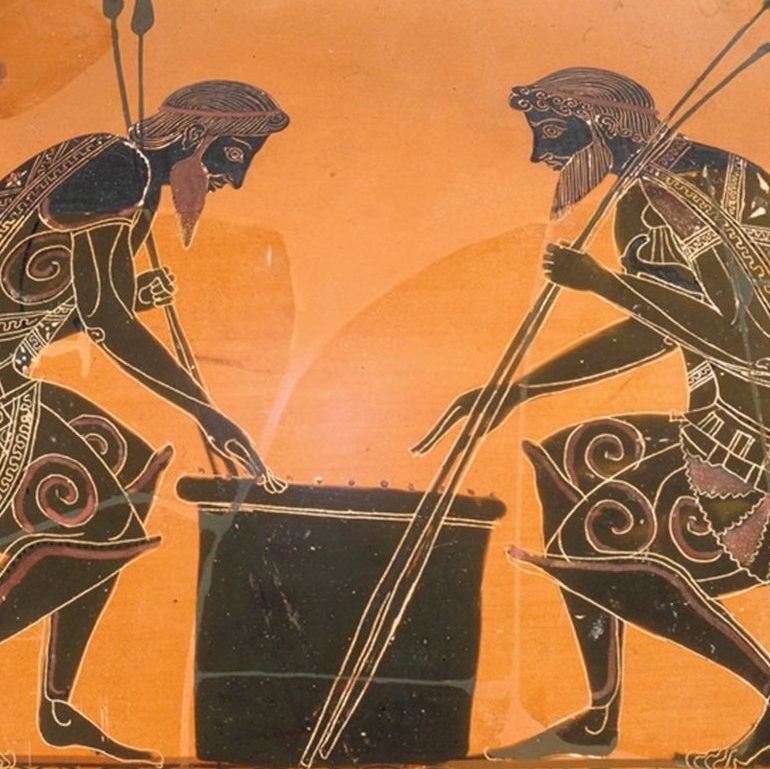Robert Yazzie and Amber Kanazloah Crotty don’t like to say that Navajos have “lost” their knowledge of their native traditions. They might say that some Navajos are not in “relationship” with elements of their culture. The knowledge is there somewhere, as a part of who they are – like a vague sense of “coyote” as a fundamental of experience, along with the two sides, male and female, of experience – but their recognition of this essential knowledge and their understanding of what to do with it have been disrupted. It is part of the mission of the Diné Policy Institute to foster a renewed understanding and use among the Navajo people of Navajo traditions and values.
The Diné Policy Institute has its home at Diné College, in Tsaile, Arizona, on the Navajo Reservation – the first of the Tribal Colleges, founded in 1968. Yazzie, a J.D. from the University of New Mexico Law School and the Chief Justice Emeritus of the Navajo Nation Supreme Court, is the institute’s director. Crotty is a graduate student in Native American Studies at UCLA interning at the Institute.

According to its website, “The Diné Policy Institute is established under Diné College as a research institute to ‘mesh’ Western research practices with traditional Navajo values, Natural, Traditional, Customary, and Common laws … and principles to advise (by recommendation) the Navajo Nation law and policy-makers.” Further, “DPI will also develop the student’s ability to learn and live the Navajo Life Way consistent with Sa’ah Naghai Bik’e Hozhoon (SNBH), and assist them in gaining command of the Western learning and living skills, through its curriculum.” Another purpose “will be to develop a four-year degree program that focuses on Nation-building with the emphasis on making Navajo laws and policies grounded in tradition, customs, values, spiritual beliefs and practices.”
Every Indian nation has its unique story of catastrophic contact with the expanding European settlement of the continent. Nonetheless, there are reoccurring patterns in these stories, like the forced removal of Native communities by foot to distant reservations so that their more favorable native grounds could be taken by the government, settlers, or commercial interests. For the Navajo, this was “The Long Walk” to the Bosque Redondo reservation in Southeastern Arizona of about 10,000 people, a walk during which over 200 Navajo died. Scandalously conceived in its nature and similarly ill-conceived in its practical effects, the resettlement, like others, was a disaster, and the Navajo were permitted to return home in 1868.

Another recognizable pattern is a kind of cultural dislocation. Along with the poverty, unemployment and ill-health that have been products of conquest and envelopment by a profoundly different and adverse dominant culture, there has been the separation for many Navajos from their sustaining traditions and values. All Tribes confront this issue, however they may deal with it, or fail to. It is not surprising that the Navajo, the second most populous nation (after the Cherokee), on the largest reservation, have conceived the ambitions of the Diné Policy Institute. To be a resource in Native ways of thinking to the Navajo government and nation. To educate young Navajos in how to live, as reality suggests they must, within the wider American culture, but how to do it as Navajos. To be an expanding resource, too, for research in Navajo issues – not just by providing a home for more academic research by Navajos (Diné – “the people”), but also through a “policy process and methods of analysis” that are “Diné based.”

Interestingly, as we sat through a primer in Diné ideas at the Institute, generously offered by Yazzie, Crotty, and undergraduate Shaundena Litson, we struggled with the concept of “Coyote.” Yazzie had already warned, as is always so, that the ideas don’t translate with comfortable accuracy into another language. “Man” and “Woman,” for instance, in Diné thought, are not adequately conveyed by notions, in English, of duality or opposites. Still, one could perceive some familiar notion of paired fundamentals to hang onto. But where did “coyote” come from? How did it fit in as a third fundament? Yazzie tried to find ways to explain it to us. He offered practical representations. Then it occurred to him.
“Consequence,” he said. “Coyote is consequence.”
AJA

Greetings! I’ve been reading your site for a while now and finally got the bravery to go ahead and give you
a shout out from Humble Tx! Just wanted to mention keep up the excellent work!
The “consequence” arise because one has step over the boundary of what is acceptable to human norm of right or wrong. Therefore, coyote is the expression of human consciousness.
I’m from Poland, perhaps that,s why I really know what means freedom. and human rights. Navajo- beautiful, proud and wise nation. I,m very interesting in Indian culture and historya and my heart has alaways been with you. I wish all of you courage to defend your own preciouse culture.
Long way of Navajo…no comments. Your friend, Gina